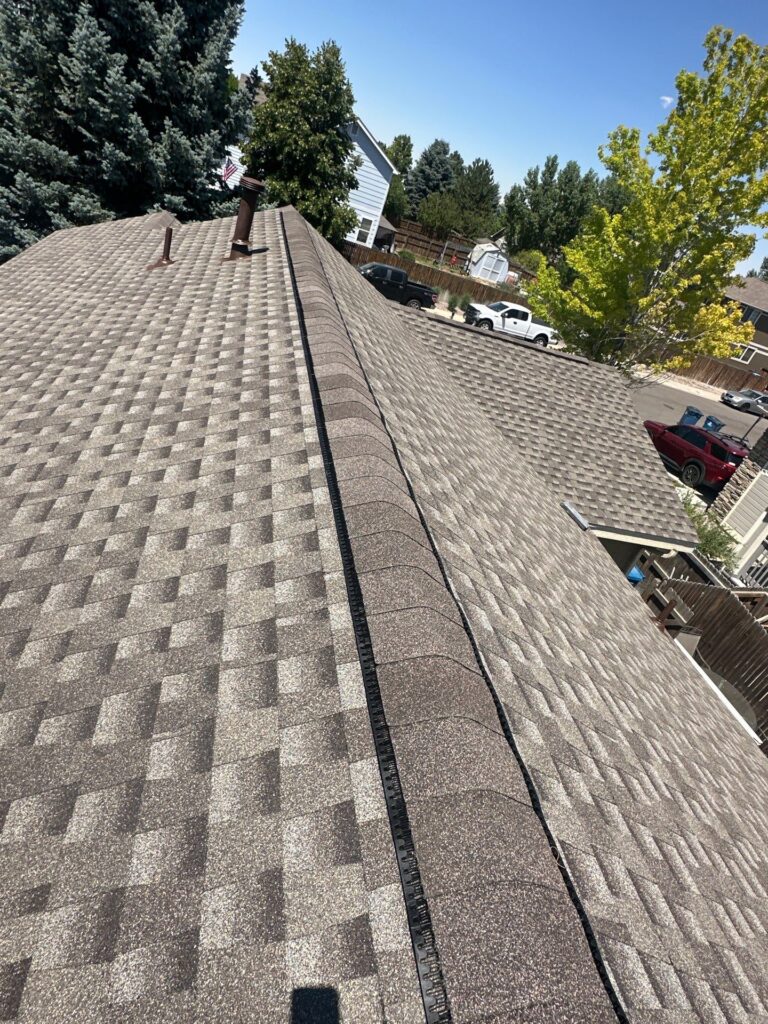Introduction: The Overlooked Cost Factor in Roof Replacement
When budgeting for a new roof, homeowners often focus on material choices or contractor rates. However, one of the most crucial cost determinants is often overlooked — the roof pitch. In this guide, we break down how roof pitch impacts roofing costs in measurable ways and why it should be a priority consideration for anyone planning roof replacement, particularly for homeowners looking for roofing in Denver, Colorado.
What Is Roof Pitch? A Key Structural Element That Drives Costs
Roof pitch refers to the steepness or slope of a roof and is expressed as a ratio of the vertical rise to the horizontal span. A common pitch might be 6:12, meaning the roof rises six inches for every twelve inches of run.
Why It Matters for Roofing Projects:
- Drainage Performance: Steeper roofs shed rain and snow more efficiently, reducing water damage risks.
- Aesthetic and Architectural Influence: The pitch defines the home’s architectural style and affects curb appeal.
- Material Compatibility: Different pitches support different roofing materials, influencing not only the aesthetic but also cost and performance.
The Correlation Between Roof Pitch and Installation Costs
The pitch significantly affects labor intensity, safety requirements, and the volume of materials needed. Below is a breakdown of how different slopes influence overall project costs.
Low-Slope or Flat Roofs
Pitch Range: 0:12 to 2:12
Characteristics:
- Commonly found in commercial structures
- Require waterproof membrane systems (e.g., TPO, EPDM, PVC)
- High attention to drainage design to avoid ponding
Cost Implications:
- Labor is easier but must be done with precision
- Materials like membranes can be expensive
- Drainage systems may need custom solutions
Moderate-Pitch Roofs
Pitch Range: 4:12 to 6:12
Characteristics:
- Standard for most residential homes
- Accommodates asphalt shingles, tile, metal, and other materials
- Safer and faster installation compared to steep slopes
Cost Implications:
- Balanced material usage and labor time
- Most cost-effective in terms of risk and performance
High-Pitch Roofs
Pitch Range: 7:12 and above
Characteristics:
- Common in snowy regions to prevent accumulation
- High visual appeal and better water runoff
- Often require special equipment or scaffolding
Cost Implications:
- Labor costs spike due to safety harnesses and limited accessibility
- More materials needed due to larger surface area
- Longer installation timelines increase project overhead
Surface Area: The Hidden Multiplier
Steep roofs inherently have more surface area than their flat counterparts, even on the same house footprint. This means:
- More material usage: Additional shingles or metal panels required
- Increased underlayment needs: Ice and water barriers become more essential
- Elevated fastener and flashing requirements
Every increase in pitch adds incremental square footage, raising the overall cost with each slope ratio.
Safety and Labor Complexity
Safety regulations in roofing are especially strict for high-pitched systems. Roofers must use:
- Fall arrest systems
- Guardrails
- Scaffolding or roof jacks
These not only ensure safety but also slow down the pace of work, increasing hourly labor charges. Steeper roofs are often classified as hazardous sites, attracting more experienced (and therefore expensive) contractors.
Material Options Based on Roof Pitch
Flat Roofs:
- Materials: TPO, EPDM, Modified Bitumen
- Installation: Heat-welded or adhesive-based systems
- Pros: Economical for large buildings, energy-efficient
- Cons: Shorter lifespan, complex drainage
Moderate to Steep Slopes:
- Materials: Asphalt shingles, metal panels, tile, slate
- Installation: Nailed or mechanically fastened
- Pros: Longer lifespan, better drainage
- Cons: Varies based on pitch and contractor experience
Geographic Considerations: Why Pitch Matters More in Denver
Denver’s climate brings unique challenges:
- Snow Load: Steep pitches are ideal to avoid heavy snow accumulation.
- Hailstorms: Certain pitches allow for better hail impact dispersion.
- UV Exposure: Denver’s high elevation means stronger UV radiation, demanding durable roofing materials and proper ventilation.
For homeowners seeking roof replacement in Denver, hiring experienced professionals is essential. Tried and True Roofing, a reputable roofing company in Denver, delivers expert services tailored to the unique conditions of Denver, Colorado.
Roof Pitch and Insurance Premiums
Insurance companies often factor roof pitch into premium rates. Flatter roofs are seen as higher risk due to water ponding and damage accumulation. Conversely, steep roofs may lower premiums but raise installation costs. Choosing the right pitch is a balance between upfront investment and long-term financial strategy.
Choosing the Right Roof Pitch for Your Home
While architectural design will often dictate pitch, new constructions or major renovations allow flexibility. Key considerations:
- Local climate: Snowy or rainy regions benefit from steeper roofs
- Budget constraints: Steeper roofs cost more upfront
- Aesthetic preference: A high-pitch gable roof presents traditional charm, while low-slope designs create a modern look
Consult with licensed roofing contractors in Denver to determine what slope best suits your home structurally, financially, and stylistically.
Conclusion
Roof pitch is far more than an architectural feature—it’s a driving force behind roofing project costs, safety measures, material selection, and long-term durability. Whether you’re evaluating roofing repairs or a full replacement, factoring in pitch ensures you budget accurately and select the best materials for your home’s needs. For those exploring roofing in Denver, understanding the cost implications of your roof’s pitch will give you a decisive advantage in managing your next project wisely.


